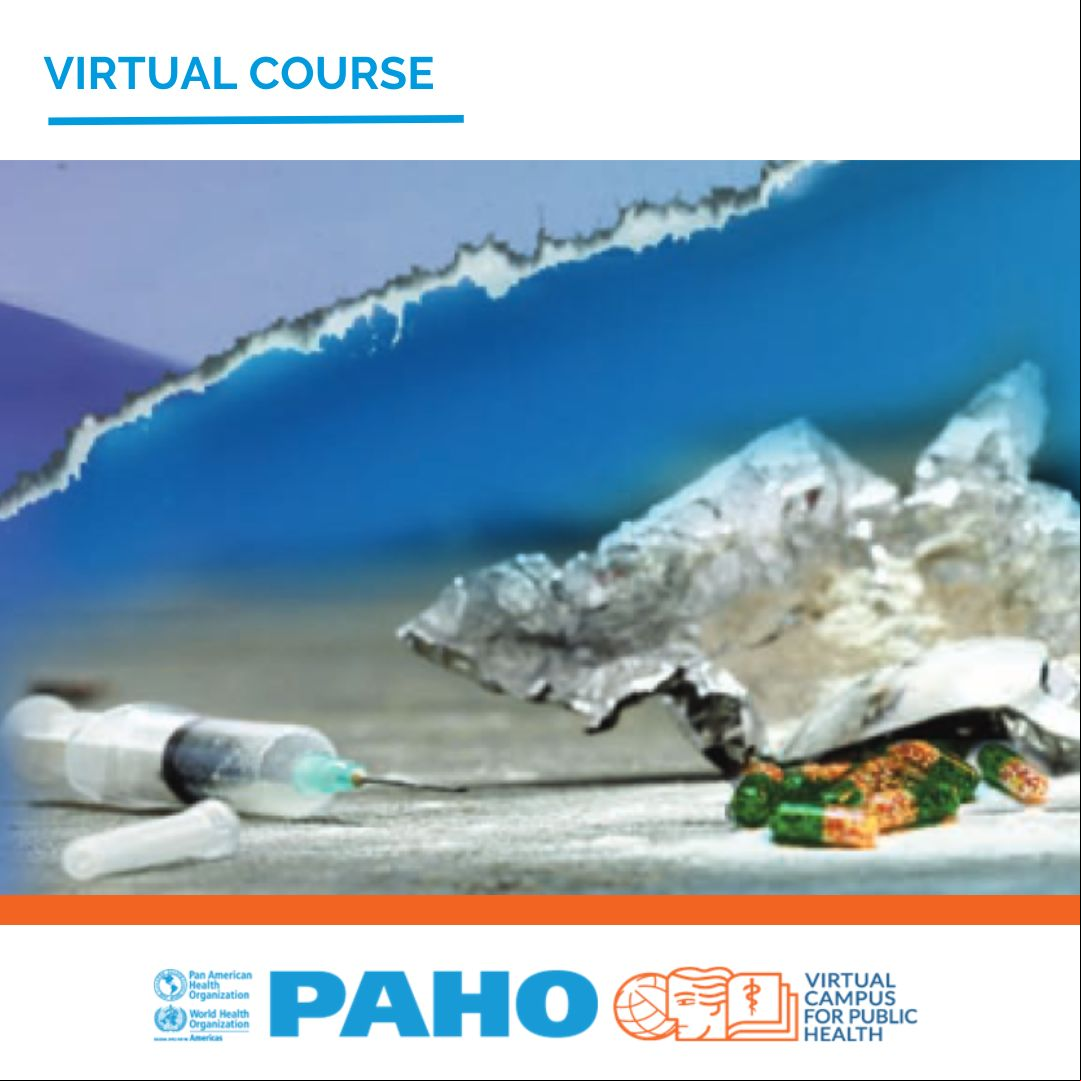
VERSIÓN ESPAÑOL ENGLISH VERSION
INTRODUCTION:
Welcome to the Virtual Course on Drug Policy and Public Health. Psychoactive substances, which are both illegal drugs and prescription drugs used illicitly for their psychoactive properties, are attracting increasing attention throughout most of the world due to their health consequences and the social problems they cause.
To address their public health consequences, we need to understand their pharmacological properties and social and psychological functions, the different routes of istration, their cultural significance in everyday life, the reasons for their use, and the harmful mechanisms associated with misuse.
The course focuses only on psychoactive substances controlled by the United Nations conventions, which are illegal or can be obtained with a prescription through medical prescription systems.
COURSE STRUCTURE:
Module 1. Drugs and their effects on the brain, the body, and behavior
Module 2. Epidemiology of drug use in the Americas
Module 3. Drug harms, vulnerability, and disease burden
Module 4. Introduction to drug policies
Module 5. Reducing demand: preventing drug use
Module 6. Reducing demand: treatment, harm reduction, and rehabilitation
Module 7. Supply control
Module 8. Criminalization and decriminalization of drug use
Module 9. Prescription systems
Module 10. Toward a public health approach to drug control policies - justification and resources
Module 11. Mitigating the negative effects of substance use - how to develop a public health action plan
COURSE OBJECTIVES LEARNING:
Define and classify psychoactive substances; describe the acute and chronic effects of different substances; explain how different psychoactive substances act on the brain; and define the concept of "dependence."
Describe the epidemiology of drug use in Latin America and the Caribbean.
Describe the burden of disease caused by illegal drugs in the Americas.
Identify the relationships between narcotics, markets, and the harmful effects of use.
Define drug policies.
Main types of policies.
Describe the relationship between drug policies and public health.
United Nations conventions and international organizations.
Describe the results of research on primary prevention of substance use.
Describe the services designed for people with substance use disorders.
Describe demand control and the strategies implemented by law enforcement to reduce substance use by stemming supply.
Understand the effects of criminalizing and decriminalizing drug use.
Describe the prescription regimes.
Analyze the theft and diversion of psychotropic drugs for non-medical use.
Describe the justification and resources needed to develop an action plan from a public health perspective to reduce the harmful effects of substance use.
Conduct a local situation analysis.
Develop a public health response.
TIME AND DEDICATION:
The course is open and available at the CVSP. As this is a self-study course, participants can schedule their own time and dedication times. The estimated time for completing all modules and the final assessment is 15 hours.
